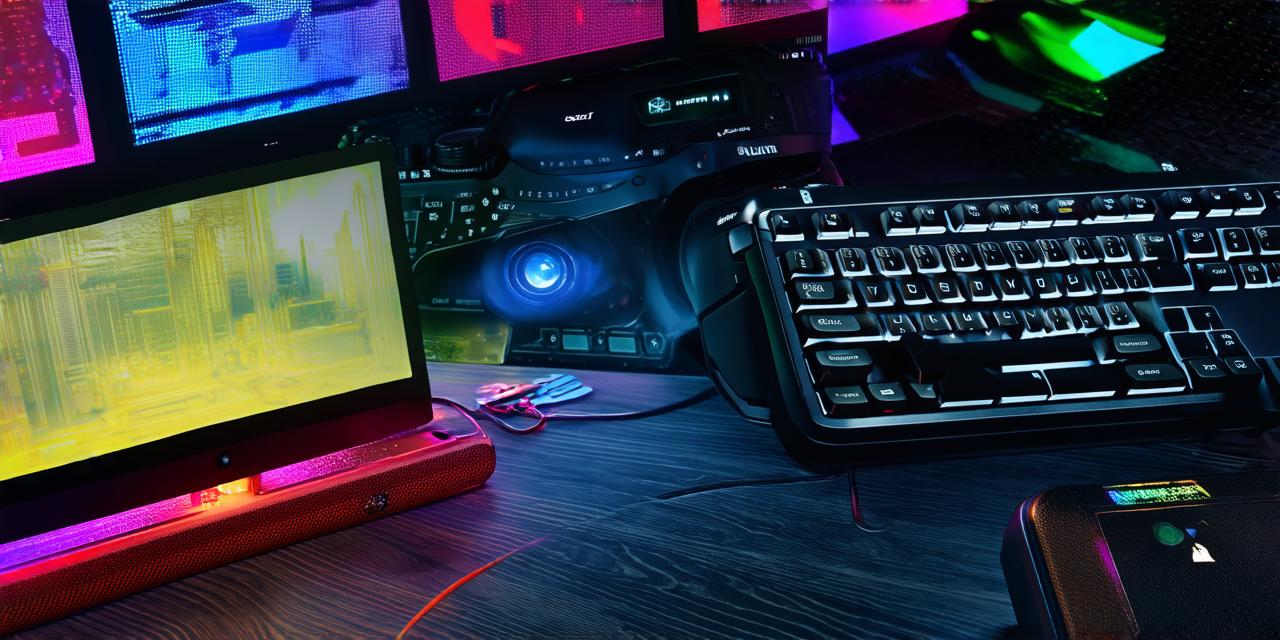1. Choose the Right Equipment
Before diving into the process of making a video while playing a game, it’s important to choose the right equipment that suits your needs and budget. A good-quality camera is essential for capturing high-quality footage. For example, if you are planning to create a Let’s Play series or a walkthrough video, a DSLR or mirrorless camera would be a better choice as they offer more control over the camera settings, such as shutter speed and aperture, which can result in better image quality. On the other hand, if you have a limited budget, a smartphone with a high-resolution camera could suffice.
2. Set Up Your Camera Settings
Once you’ve chosen your equipment, it’s time to set up your camera settings. It’s important to choose the right frame rate and resolution that suit the game you are playing. If you are planning to create a fast-paced video, a higher frame rate would be more suitable, while a lower frame rate may work better for slower-paced games. The resolution should match the aspect ratio of your game’s screen, such as 16:9 or 4:3.
In addition, you may want to enable autofocus and set up the focus mode to ensure that the camera stays focused on the action. You can also adjust the ISO setting to balance light sensitivity with noise reduction.
3. Choose the Right Audio Settings
Audio is just as important as visuals when creating a video while playing a game. To capture high-quality audio, you may want to invest in an external microphone or use built-in microphones on some cameras. It’s also important to choose the right audio settings, such as setting up noise reduction and adjusting the audio levels to balance background noise with the game’s sound effects.
4. Plan Your Video
Before you start recording, it’s important to plan your video and decide on the type of content you want to create. For example, if you are creating a Let’s Play series, you may want to focus on specific challenges or objectives in the game and provide commentary and analysis along the way. If you are creating a walkthrough video, you may want to focus on highlighting important features and strategies of the game.
It’s also important to think about your target audience and what type of content they would be interested in. For example, if your target audience is casual gamers, you may want to create a more lighthearted and entertaining video, while if your target audience is serious gamers, you may want to create a more informative and strategic video.
5. Record Your Gameplay
Once you’ve planned your video, it’s time to start recording your gameplay. It’s important to record the entire gameplay session without any cuts or edits to maintain a sense of flow and immersion for viewers. If you are planning to add commentary or analysis during the recording, make sure to speak clearly and concisely while avoiding overly complex terminology or jargon.
6. Edit Your Video
After recording your gameplay session, it’s time to edit your video to add any desired effects, such as transitions, captions, or music. It’s important to keep the editing process simple and straightforward, as too much editing can be overwhelming for viewers. Instead, focus on creating a cohesive narrative that flows smoothly from one segment to the next.
7. Optimize Your Video for SEO
To increase visibility and attract traffic to your video, it’s important to optimize your video for SEO. This includes using relevant keywords in the video title, description, and tags, as well as adding a captivating thumbnail that accurately represents the content of the video. You can also use annotations or end screens to encourage viewers to watch more of your videos or subscribe to your channel.
Case Study: Creating a Let’s Play Video for “The Legend of Zelda: Breath of the Wild”
1. Choose the Right Equipment
A DSLR camera with a high-resolution sensor and a wide-angle lens would be suitable for capturing the vast open world of the game.
2. Set Up Your Camera Settings

Set the frame rate to 60 frames per second (fps) and the resolution to match the aspect ratio of the game’s screen, such as 16:9. Enable autofocus and set up the focus mode to ensure that the camera stays focused on the action.
3. Choose the Right Audio Settings
Use an external microphone with noise reduction and adjust the audio levels to balance background noise with the game’s sound effects.
4. Plan Your Video
Decide on specific challenges or objectives in the game and provide commentary and analysis along the way.
5. Record Your Gameplay
Record the entire gameplay session without any cuts or edits, speaking clearly and concisely while avoiding overly complex terminology or jargon.
6. Edit Your Video
Add captions or annotations to highlight important details, as well as a captivating thumbnail that accurately represents the content of the video.
7. Optimize Your Video for SEO
Use relevant keywords in the video title, description, and tags, as well as add annotations or end screens to encourage viewers to watch more of your videos or subscribe to your channel.
Conclusion
Creating a video while playing a game can be a fun and engaging way to showcase your games to potential players. By choosing the right equipment, setting up your camera settings, planning your content, recording your
